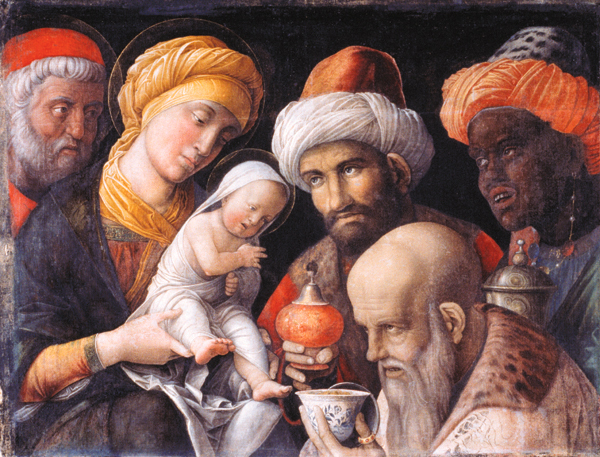Image Details

Collection: The J. Paul Getty Museum
Joseph, Mary and the three magi gaze at the newborn babe in Italian artist Andrea Mantegna’s “Adoration of the Magi” (c. 1500). The magi proffer precious gifts: a fine Chinese porcelain bowl filled with gold coins; a censer (for frankincense) made of Turkish tambac ware (an alloy of copper); and a green agate vessel, presumably filled with myrrh.
The varying depictions of the magi in art reflect the varying understandings of the role these mysterious wise men from the East played in early Christian thinking. The magi of Mantegna’s painting, for example, with their different skin tones, are depicted as representatives of Europe, Asia and Africa. That’s because some early Christians interpreted the gospel story in light of Psalm 72:10–11: “May the kings of Tarshish and of the isles render him tribute, may the kings of Sheba and Seba bring gifts May all the nations serve him.” For early Christians, the international team of magi provided evidence that salvation through Jesus Christ was open to the whole world.
